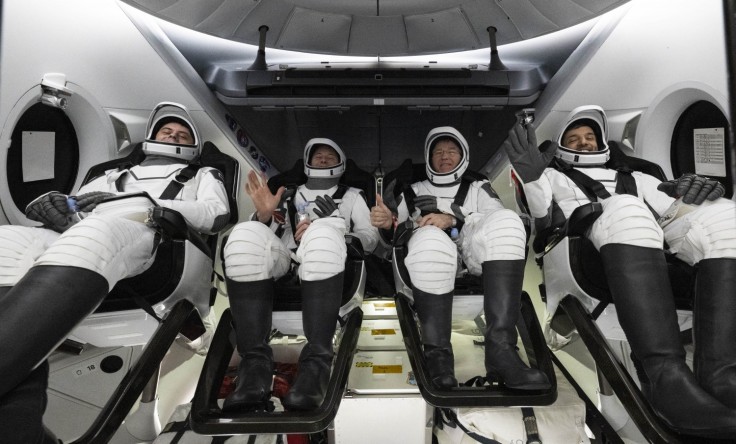It's a successful re-entry and landing for NASA's SpaceX Crew-6 members.
The space agency recently reported that the SpaceX crew-6 members had successfully re-entered Earth off the coast of Florida, marking an end for their six-month mission.
NASA's SpaceX Crew-6 mission launched on Mar. 2 on a SpaceX Falcon 9 rocket from its Kennedy Space Center in Florida; it successfully reached the ISS around a day later, per NASA.

Splashdown For Crew-6
NASA revealed in its latest blog post that its SpaceX Crew-6 members had successfully returned to Earth's surface on Sept. 4. The crew safely splashed down off the coast of Jacksonville, Florida, in a SpaceX Dragon spacecraft at 12:17 AM EDT.
The crew consists of four members: NASA astronauts Stephen Bowen and Woody Hoburg, United Arab Emirates astronaut Sultan Alneyadi, and Roscosmos cosmonaut Andrey Fedyaev. They all spent 186 days in orbit aboard the ISS.
They were originally meant to come home on the morning of Sept. 3, per Space.com. However, poor weather conditions at the time forced NASA to have them stay in the ISS, extending their stay in the station by a day.
Crew-6's Dragon spacecraft, Endeavor, also made history, with its re-entry and splashdown being its fourth flight in its tenure. It will return to Florida for inspection and processing at SpaceX's refurbishing facility at Cape Canaveral Space Force Station.
From there, the company's teams will inspect Endeavor, analyze data on its performance, and prepare it for its next flight. Meanwhile, the next NASA SpaceX Commercial Crew Program mission, Crew-7, already boarded the ISS on Aug. 27, beginning another long-duration science expedition.
According to NASA, the program's goal is "safe, reliable, and cost-effective transportation to and from the ISS and low Earth orbit." This mission design maximizes research time and increases opportunities for discovery aboard the ISS' microgravity laboratory and testbed for exploration, along with the preparation for human exploration of the Moon and Mars.
What Did Crew-6 Do In The ISS?
Bowen, Hoburg, Alneyadi, and Fedyaev didn't lounge about the ISS during their six-month stay. NASA administrator Bill Nelson said they completed "hundreds of scientific experiments for the benefit of humanity."
These scientific experiments consist of science activities and technology demonstrations, including assisting a student robotic challenge and studying plant genetic adaptations to space. They also monitored human health in microgravity to prepare for exploration beyond low Earth orbit and to benefit life on Earth.
You may recall that staying in microgravity for a prolonged duration is detrimental to a person's health. According to NASA, Astronauts staying in space for prolonged periods can lose muscle mass faster than they would on Earth, while the fluids in the body could shift upward to the head, which may put pressure on the eyes, causing vision problems.
If not working on these experiments, Crew-6 members also worked on the ISS to maintain and improve its capabilities. During their stay there, Bowen conducted three spacewalks - Hoburg joined him for two of them, while Alneyadi went with Bowen for one.
These spacewalks were meant to prepare the ISS for installing two new International Space Station Roll-Out Solar Arrays to augment the station's power generation.









